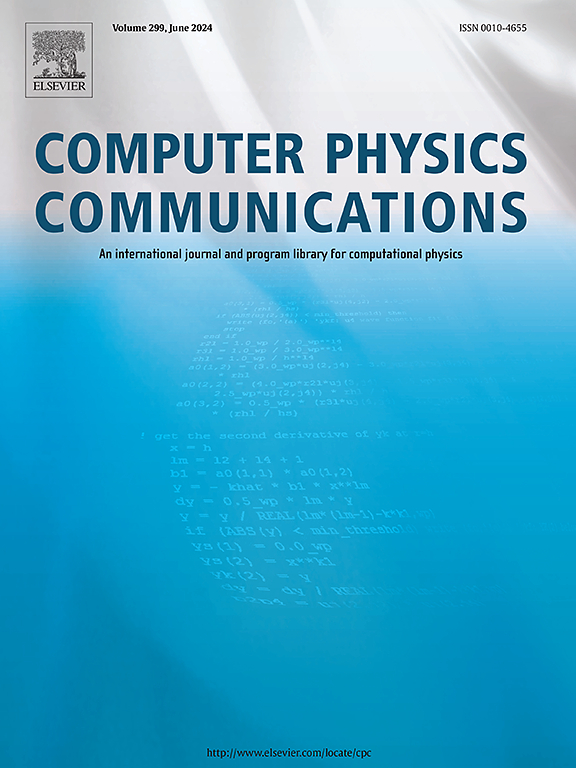基于主-副编码器-解码器网络的伽马能谱反演
IF 3.4
2区 物理与天体物理
Q1 COMPUTER SCIENCE, INTERDISCIPLINARY APPLICATIONS
引用次数: 0
摘要
伽玛射线诊断可以检测快离子的能量和空间分布,以及识别破坏迹象。探测器对伽玛射线光谱的响应涉及复杂的映射,需要一种快速准确的光谱重建方法。挑战在于频谱反演的病态性质,其中测量误差会显着放大反演结果的不确定性。为了解决这个问题,需要额外的信息,将非线性引入问题中。传统的方法通常依赖于迭代算法,如线性正则化、最大似然估计方法(ML-EM)和Gold反卷积(Gold)。近年来,神经网络因其处理非线性和高度不适定问题的能力而受到广泛关注。在本文中,我们提出了一种利用主次网络结构的方法,该方法将频谱反演分解为两个更简单的子问题,从而改善了单个网络的结果。该网络结构适用于求解高度不适定反演问题,并可应用于伽玛能谱重建。我们的方法的精度与ML-EM和Gold进行了比较,显示出卓越的稳定性和有效性,特别是在高噪声条件下,达到了适合实际应用的水平。该方法已成功应用于EAST托卡马克装置的伽玛射线谱探测。本文章由计算机程序翻译,如有差异,请以英文原文为准。
Gamma ray spectrum inversion based on master-secondary encoder-decoder network
Gamma-ray diagnosis can detect the energy and spatial distribution of fast ions, as well as identify disruption signs. The detector's response to the gamma-ray spectrum involves complex mappings, requiring a fast and accurate spectrum reconstruction method. The challenge lies in the ill-conditioned nature of spectrum inversion, where errors in measurement can significantly amplify the uncertainties of the inversion results. To solve this, additional information is needed, introducing non-linearity into the problem. Traditional approaches typically rely on iterative algorithms, such as linear regularization, maximum likelihood estimation method (ML-EM), and Gold deconvolution (Gold). Recently, neural networks have gained traction due to their strong capability in handling non-linear and highly ill-posed problems. In this paper, we present a method leveraging a master-secondary network structure that splits the spectrum inversion into two simpler sub-problems, improving outcomes beyond those of a single network. This network structure is verified suitable for solving highly ill-posed inversion problems and applying to gamma-ray spectrum reconstruction. Our method's accuracy is compared to ML-EM and Gold, demonstrating superior stability and effectiveness, particularly under high noise conditions, achieving a level suitable for practical applications. This method has been successfully applied to gamma-ray spectrum detection in the EAST tokamak facility.
求助全文
通过发布文献求助,成功后即可免费获取论文全文。
去求助
来源期刊

Computer Physics Communications
物理-计算机:跨学科应用
CiteScore
12.10
自引率
3.20%
发文量
287
审稿时长
5.3 months
期刊介绍:
The focus of CPC is on contemporary computational methods and techniques and their implementation, the effectiveness of which will normally be evidenced by the author(s) within the context of a substantive problem in physics. Within this setting CPC publishes two types of paper.
Computer Programs in Physics (CPiP)
These papers describe significant computer programs to be archived in the CPC Program Library which is held in the Mendeley Data repository. The submitted software must be covered by an approved open source licence. Papers and associated computer programs that address a problem of contemporary interest in physics that cannot be solved by current software are particularly encouraged.
Computational Physics Papers (CP)
These are research papers in, but are not limited to, the following themes across computational physics and related disciplines.
mathematical and numerical methods and algorithms;
computational models including those associated with the design, control and analysis of experiments; and
algebraic computation.
Each will normally include software implementation and performance details. The software implementation should, ideally, be available via GitHub, Zenodo or an institutional repository.In addition, research papers on the impact of advanced computer architecture and special purpose computers on computing in the physical sciences and software topics related to, and of importance in, the physical sciences may be considered.
 求助内容:
求助内容: 应助结果提醒方式:
应助结果提醒方式:


